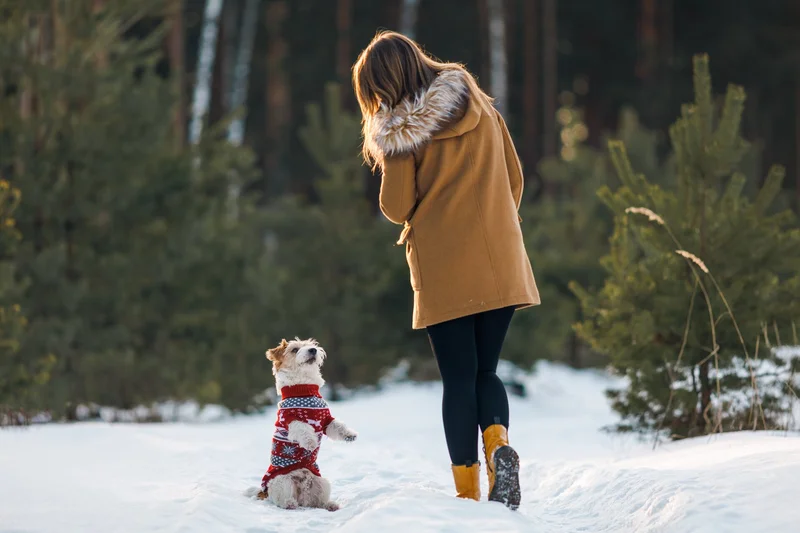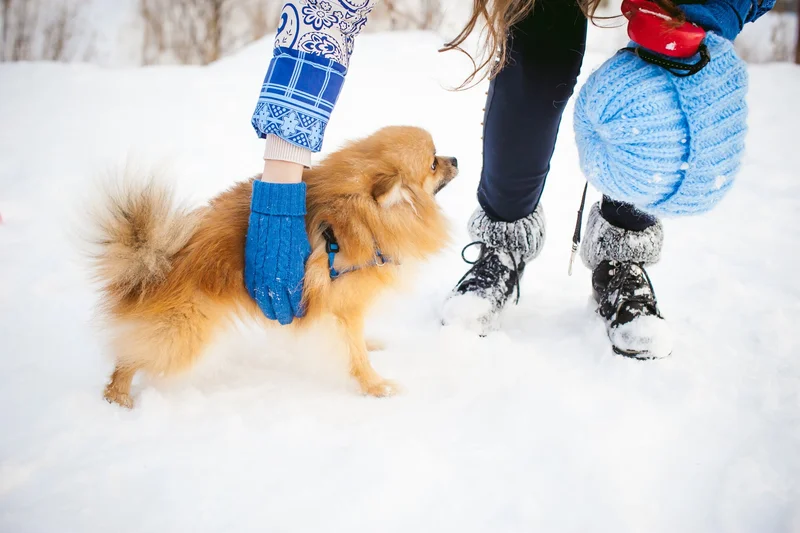Winter-cold: tips for caring for a dog in cold weather

Photo source: 123rf.com
In winter, dogs need special care, as this is a time of increased morbidity not only for people, but also for our little brothers. We'll tell you how to care for your dog in cold weather, and also give some tips on walking your pets.
Did you know that winter can affect your dog's health and well-being? Cold, humidity and wind can cause problems with her skin, coat, joints and immune system. That's why it's important to take some steps to protect your furry friend from cold temperatures and keep him happy and healthy. Today we will share tips for caring for your dog in winter that will help prevent illness and improve its quality of life.
Caring for a dog in winter.
1. Make sure all vaccinations are up to date.
Vaccinations are necessary to prevent infectious diseases that may be more common or severe in the winter, such as canine influenza, parvovirus, or leptospirosis. Consult your veterinarian about which vaccines your dog needs based on his age, breed, and health. Follow your vaccination schedule.
2. Take care of her feeding.
In winter, dogs may require more calories to maintain body temperature and energy. Therefore, it is advisable to slightly increase the amount of food you give him. It is also important not to overdo it, so as not to cause excess weight. Pet food should be high-quality and balanced, rich in proteins, healthy fats, vitamins and minerals.
3. Give supplements and vitamins.
Apart from proper feeding, you can supplement your dog's diet with some supplements and vitamins that will provide him with additional benefits. For example, fish oil is a source of omega-3 fatty acids, which promote healthy skin, coat and joints. You can also give her vitamin C, which strengthens the immune system and prevents infections.
4. Don't cut too hard.
Dogs' fur has a protective function against cold and moisture, so it is not recommended to trim it too much in winter. If your dog has long hair, you can trim it a little to keep it from getting tangled or dirty, without leaving it too short. If your dog has short or thin fur, you can throw a jumpsuit or other clothing over it when going for a walk to protect your pet from the cold.
Puppy in a towel. Photo source: 123rf.com
5. Wash with warm or hot water.
Hygiene is important at any time of the year, but special care must be taken in winter. Ideally, your pet should be bathed in warm to hot water using a shampoo suitable for his skin and coat type. You should also dry it thoroughly with a towel or blow dryer to avoid leaving the coat wet or damp. It is strongly not recommended to go outside with your dog after washing.
6. The room should be warm.
Your dog should have a comfortable and warm place to sleep and rest. You can lay out a soft warming bedding for her. Don't let her lie on the ground, and don't place her bed in places with drafts or high humidity. Avoid sudden temperature changes at home.
7. Timely veterinary examination.
Finally, it is recommended that you take your dog to the veterinarian at least once a year for a general examination and to identify any potential health problems. During the winter, you should watch for any signs of illness or illness in your dog, such as sneezing, coughing, fever, poor appetite, or lethargy.
Walk in winter. Photo source: 123rf.com
Walking in the cold.
Walking in the cold can be quite unpleasant, especially for small dogs. For them, going outside in winter is a real challenge. We'll tell you how to make walking in the cold the most enjoyable for our pets.
1. Take care of your equipment.
When walking your dog in winter, you definitely need to make sure that your pet is well equipped. Depending on the temperature conditions, the type of coat of your dog, and its resistance to cold, you need to have boots and warm overalls designed specifically for dogs.
2. Think about your walking route in advance.
Walk your dog, if possible, in areas protected from the wind. On the coldest days, it is better not to take long walks; limit yourself, for example, to a walk around the house or yard.
Walking in the cold. Photo source: 123rf.com
3. Get to know your pet well.
Each dog is individual. Some people like to walk a lot, regardless of weather conditions. Some people love to bury themselves in snow, while other dogs tuck their paws in as soon as the temperature drops just below zero. It is for the latter that it is recommended to have boots that protect sensitive paw pads from the cold.
4. Dry wool.
If you had to go for a walk with your pet during a snowfall, when you return home, dry your pet’s fur with a hairdryer or towel, and you also need to dry the dog’s clothes. After each walk, remove dirt and ice from paw pads.
Last but not least, reward your dog for his bravery! Walking on frosty days can be a real feat for your four-legged friend!